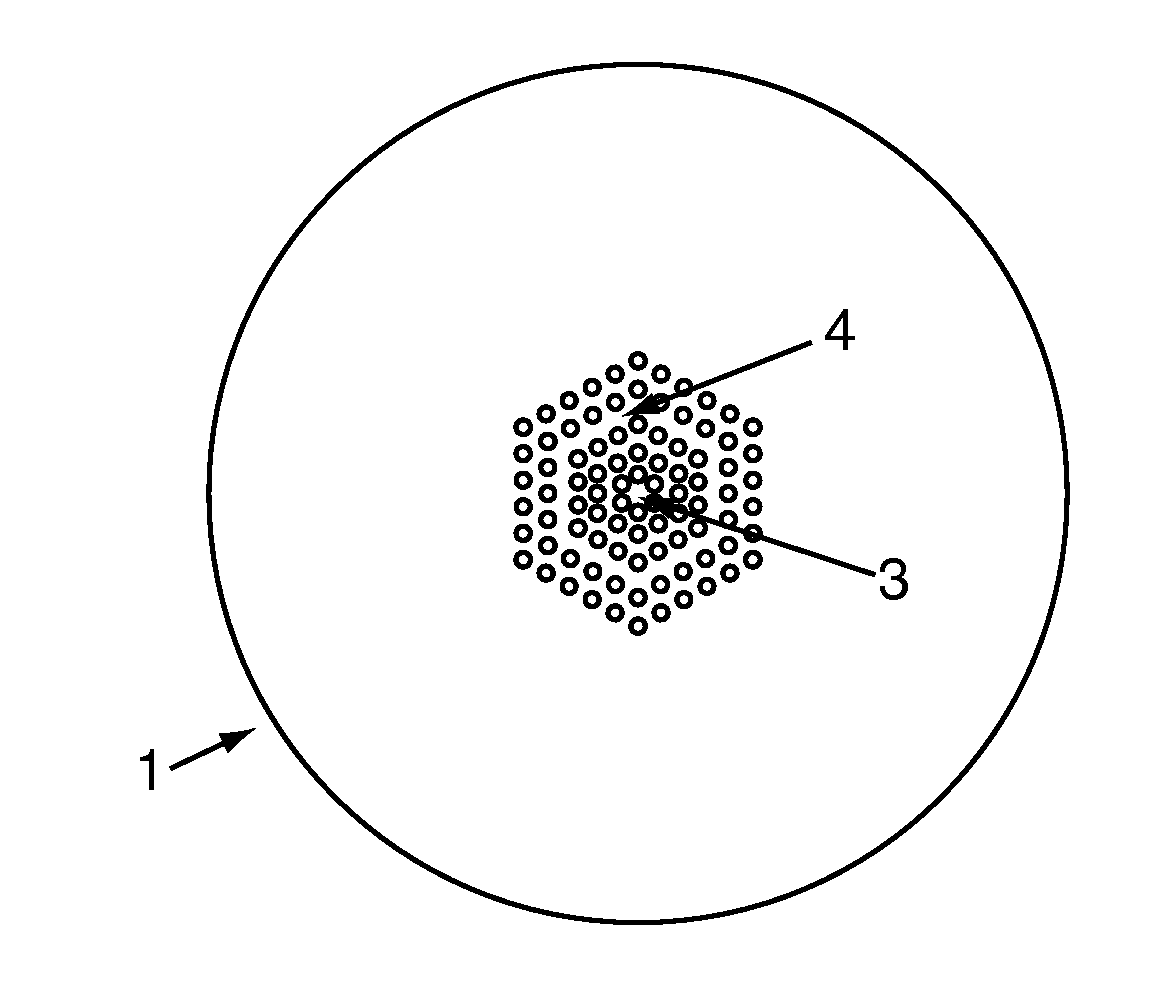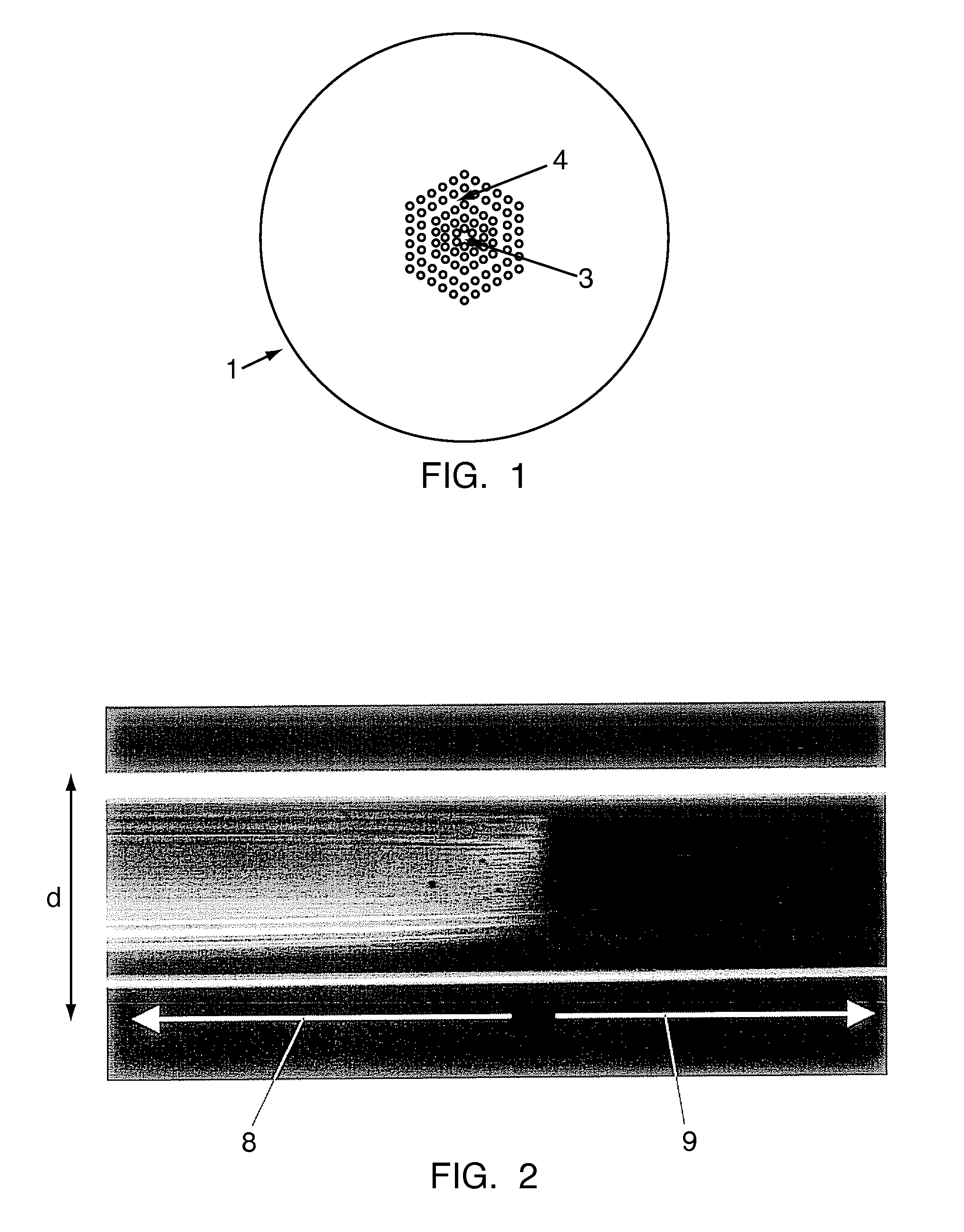All-optical fiber interferometer
an optical fiber interferometer and all-optical technology, applied in the field of optical fiber-based devices manufacturing, can solve the problems of modal guiding behavior being restrictively dependent, it is difficult to form two identical 3-db long-period fiber grating pairs in a pcf, and the approach suffers from several construction limitations, so as to improve the coupling efficiency, simplify the connectorization, and introduce minimal losses
- Summary
- Abstract
- Description
- Claims
- Application Information
AI Technical Summary
Benefits of technology
Problems solved by technology
Method used
Image
Examples
Embodiment Construction
[0041]For the construction of a micro-structured Mach-Zehnder interferometer, an index-guiding micro-structured optical fiber (1) is used, consisting of a solid core (3) surrounded by rings of air holes (4), which can be arranged in a hexagonal pattern, as shown in FIG. 1. For example, it is possible to use commercially available MOF with a core of 11 μm in diameter, voids with average diameter of 2.7 μm, and the average separation between the voids of 5.45 μm. The fiber has an outer diameter of 125 μm. This type of MOF guides light by the modified total internal reflection principle. This index-guiding fiber is single mode from 620 nm to 1600 nm.
[0042]This all-MOF interferometer comprises two splices (5) in which the air holes (4) determining the holey region (8) of the MOF are fully collapsed, as shown in FIG. 2. The length of the collapsed region (9) in each splice (5) is about 300 micrometers. The collapsing of the air holes (4) makes the propagating light-beam to broaden, allow...
PUM
| Property | Measurement | Unit |
|---|---|---|
| length | aaaaa | aaaaa |
| wavelength range | aaaaa | aaaaa |
| central wavelength | aaaaa | aaaaa |
Abstract
Description
Claims
Application Information
 Login to View More
Login to View More - R&D
- Intellectual Property
- Life Sciences
- Materials
- Tech Scout
- Unparalleled Data Quality
- Higher Quality Content
- 60% Fewer Hallucinations
Browse by: Latest US Patents, China's latest patents, Technical Efficacy Thesaurus, Application Domain, Technology Topic, Popular Technical Reports.
© 2025 PatSnap. All rights reserved.Legal|Privacy policy|Modern Slavery Act Transparency Statement|Sitemap|About US| Contact US: help@patsnap.com



